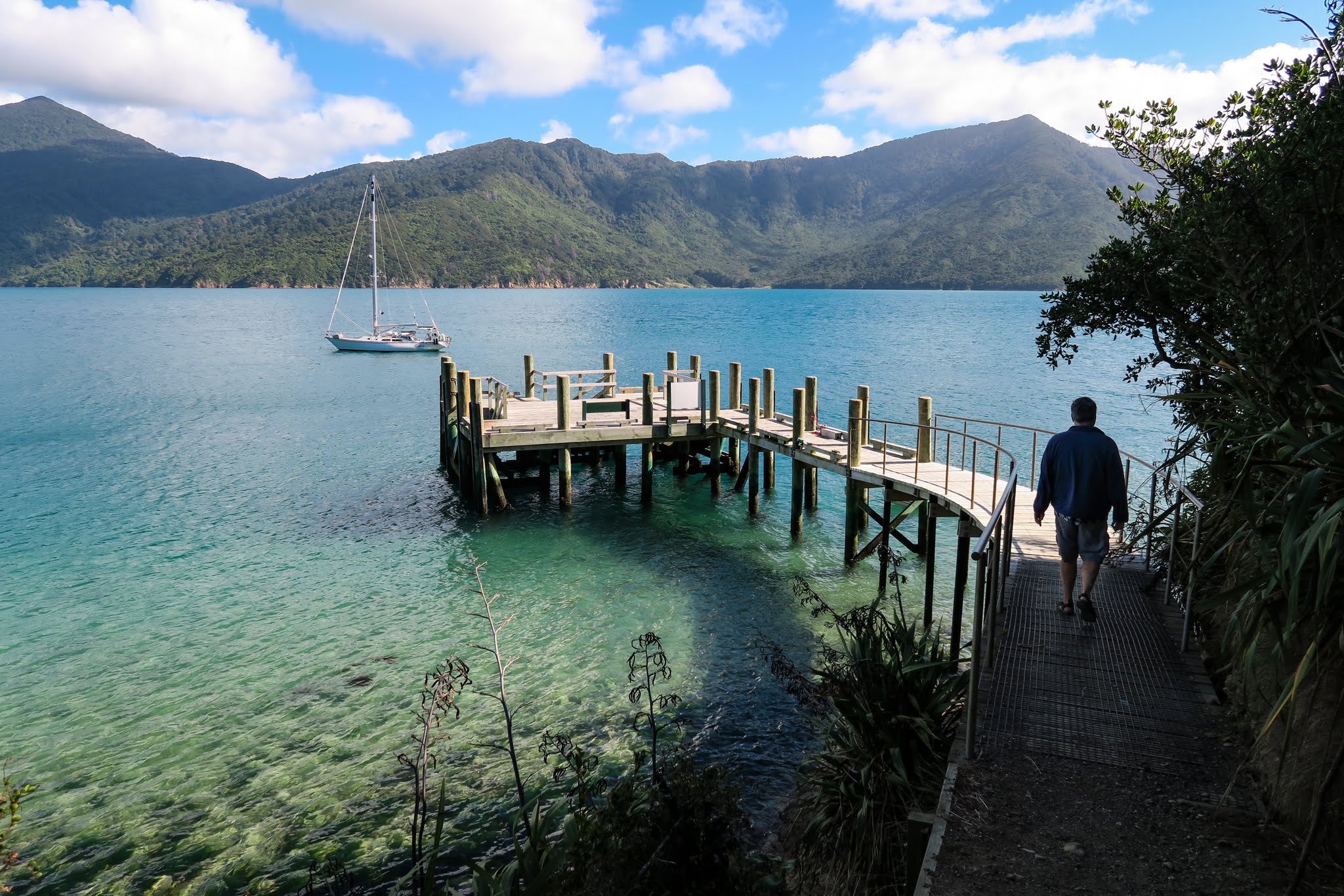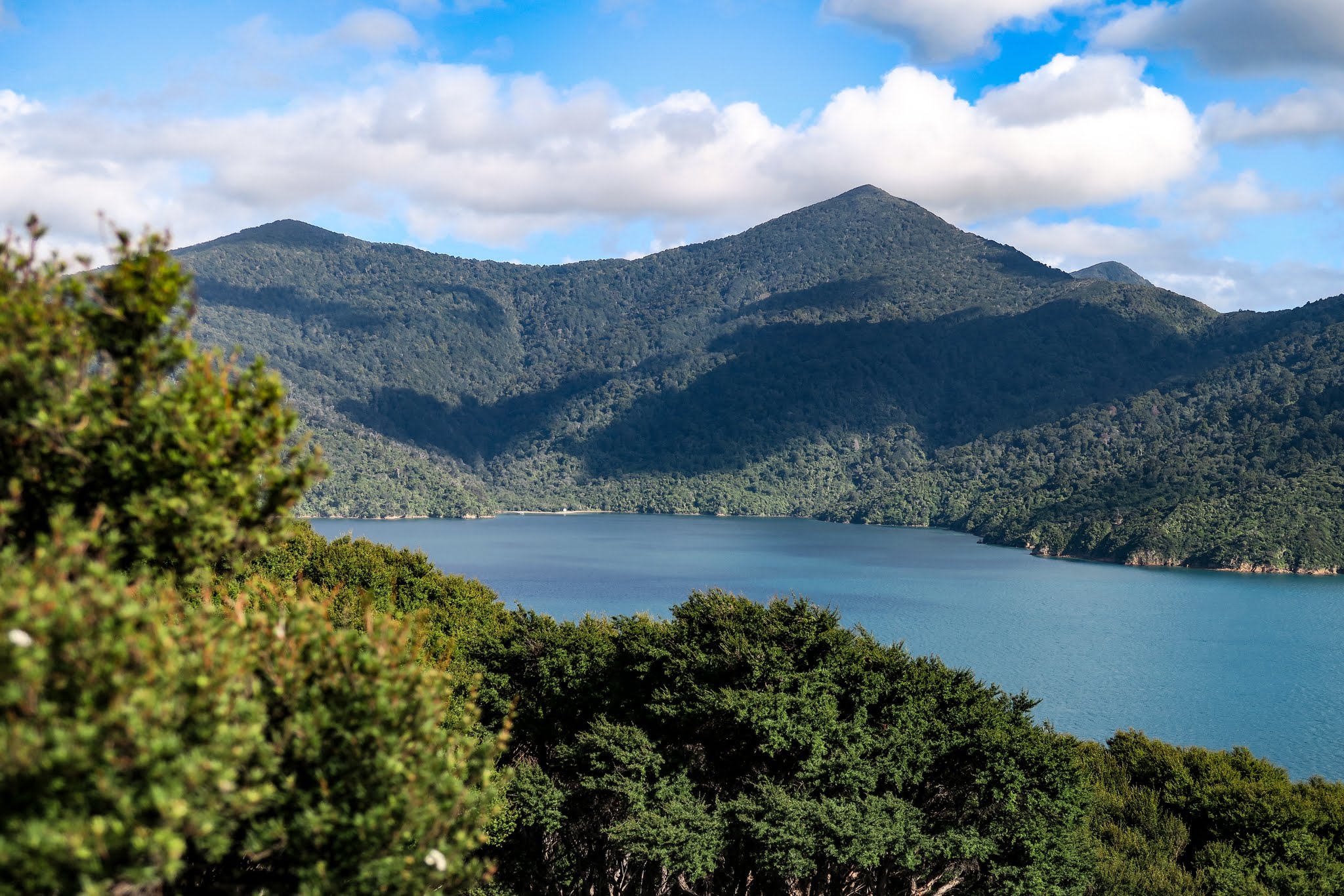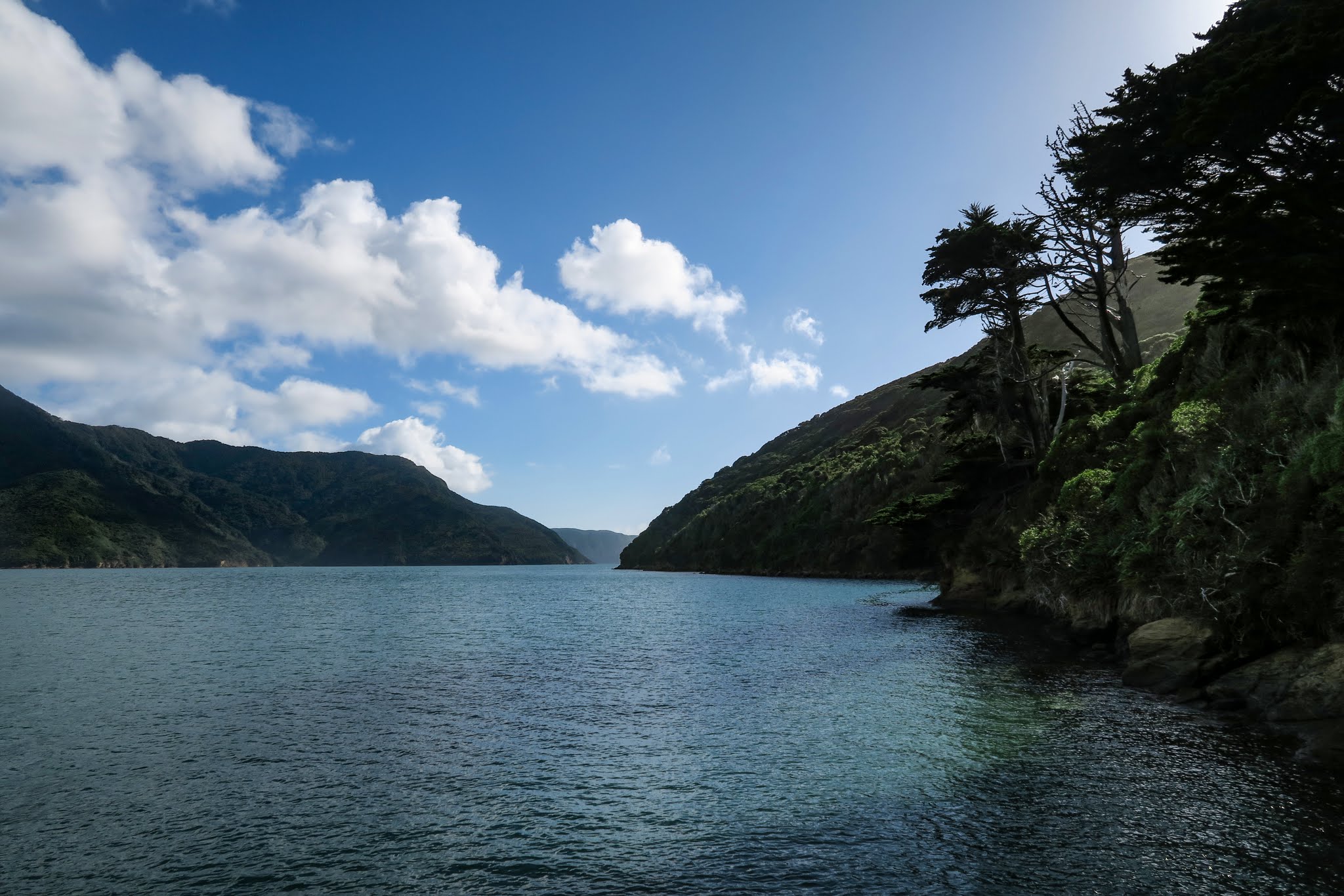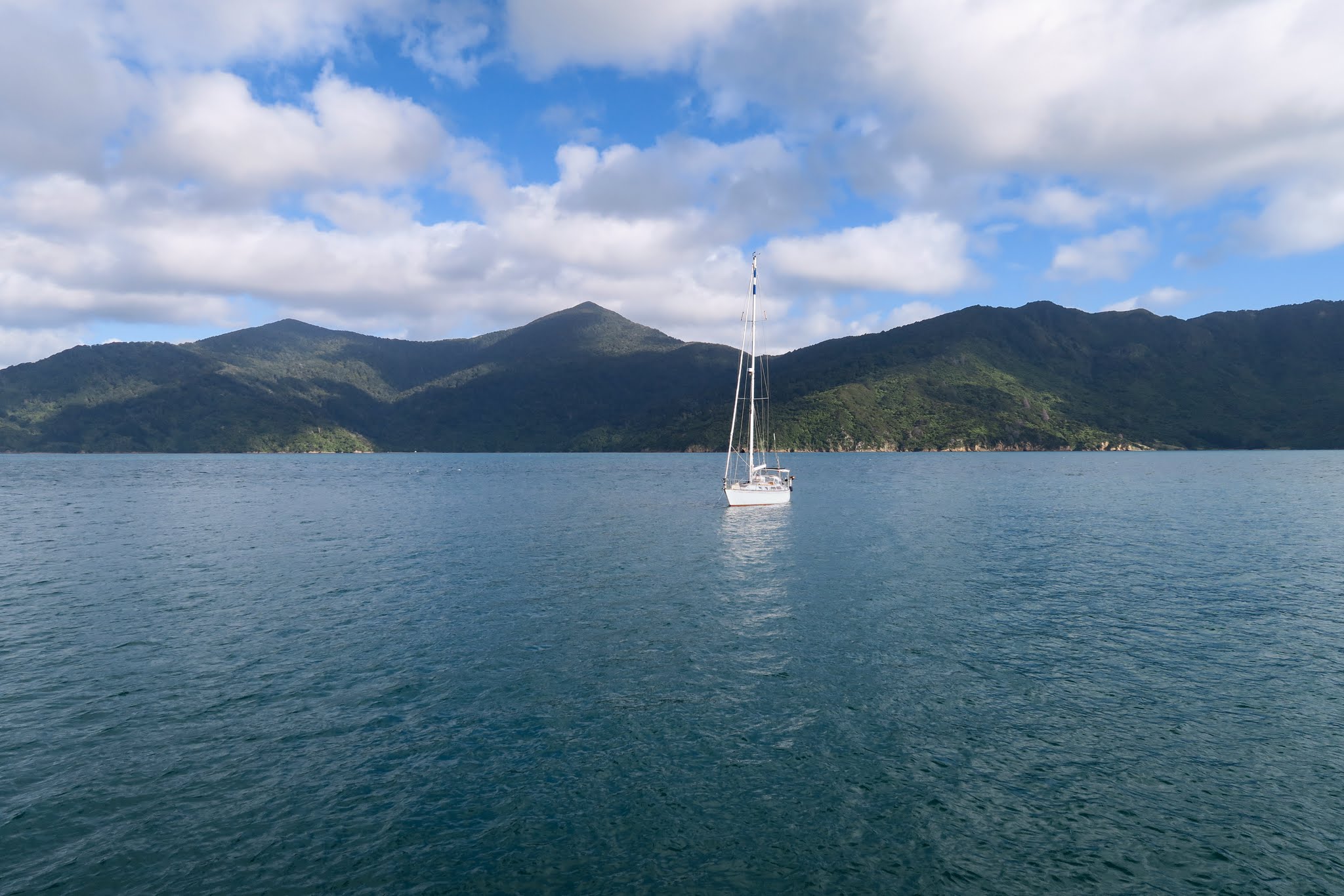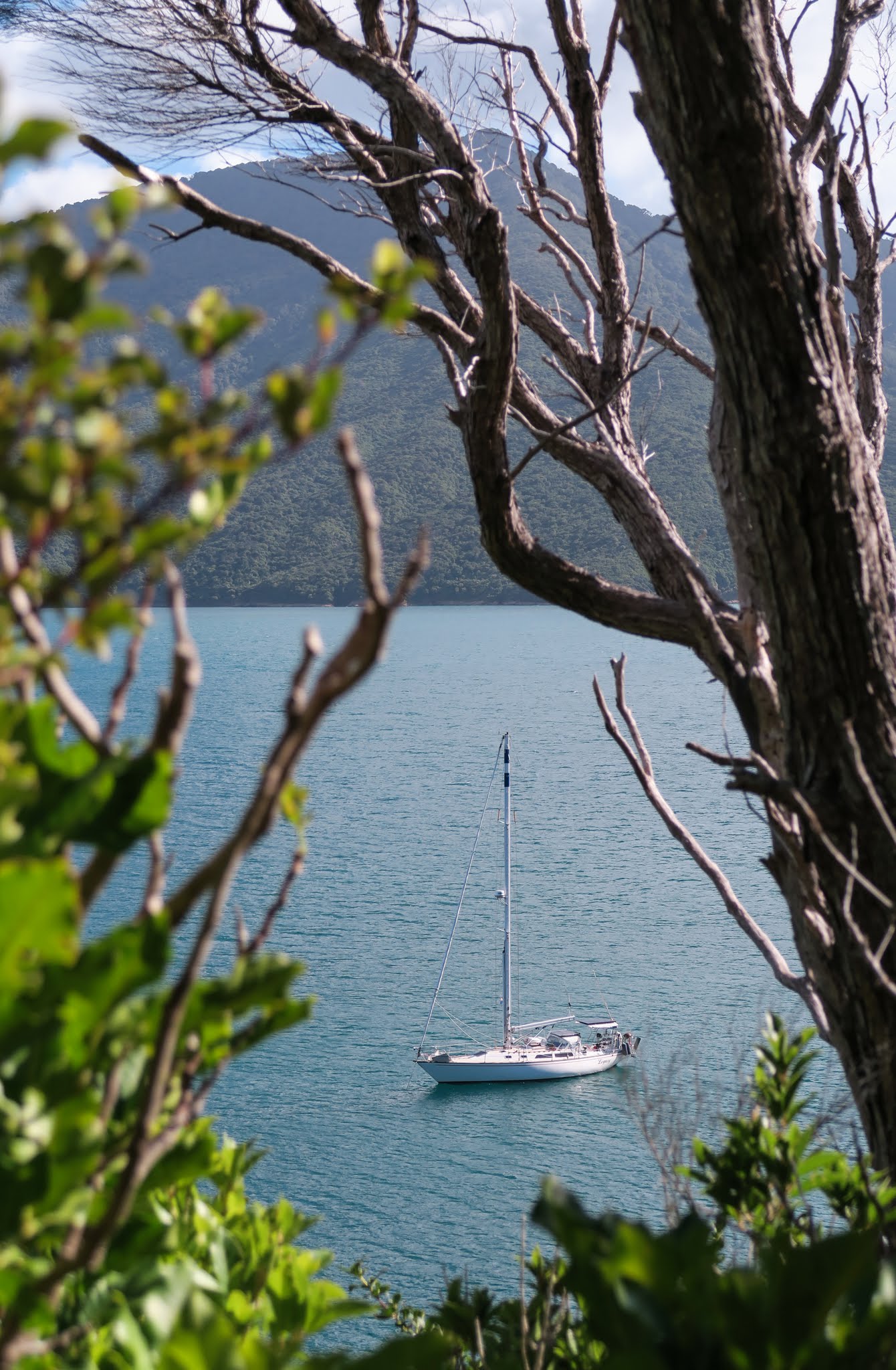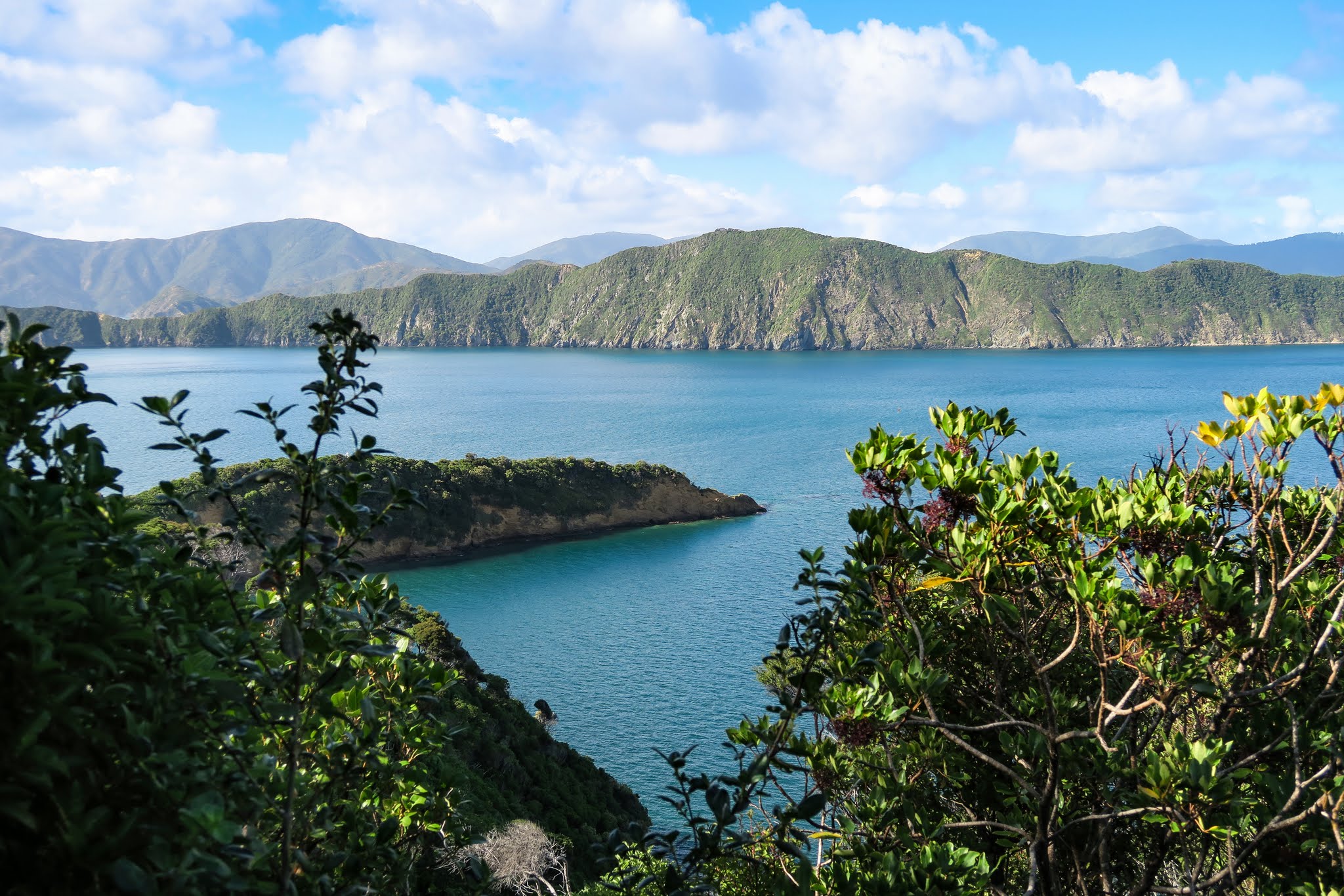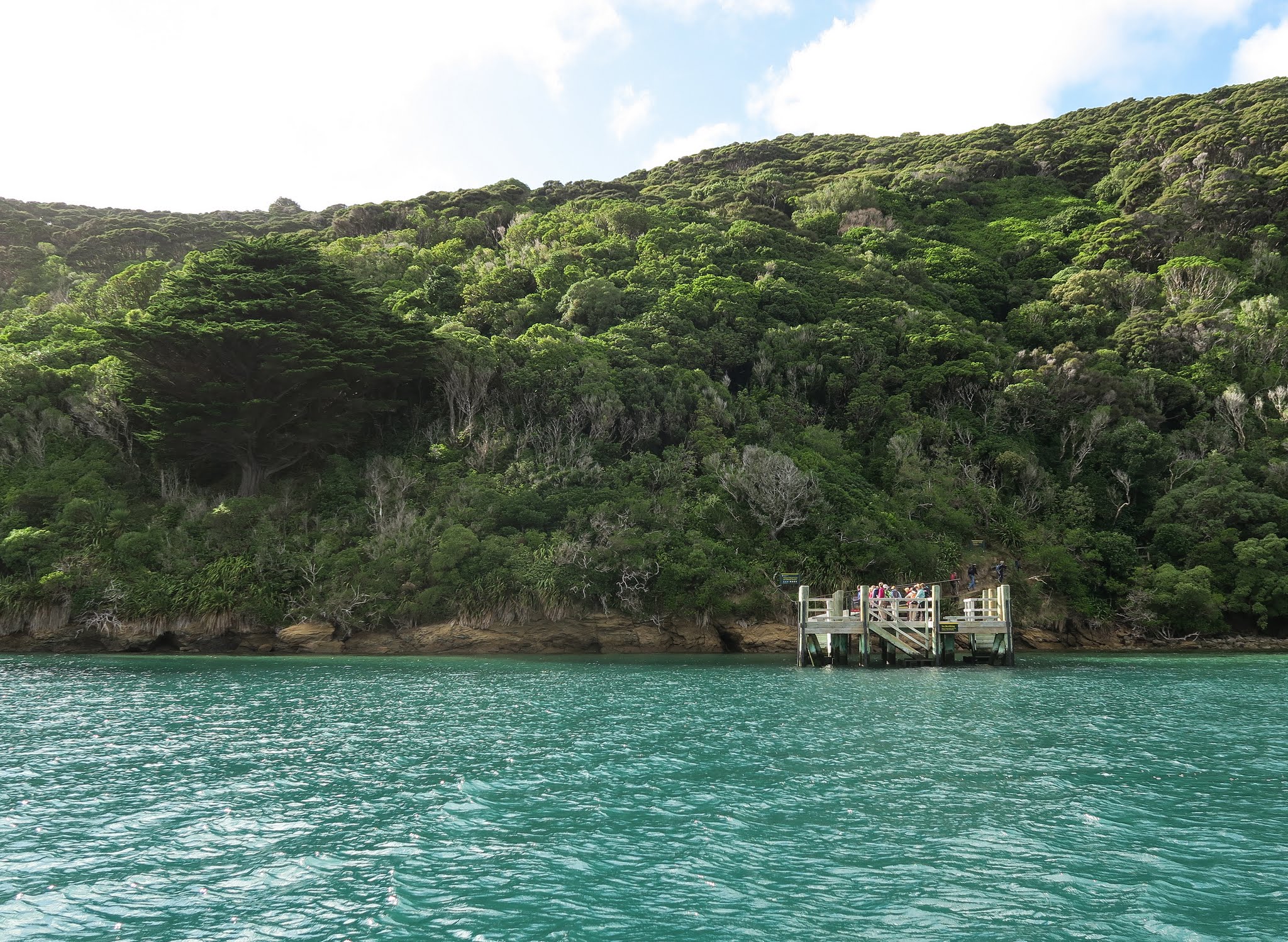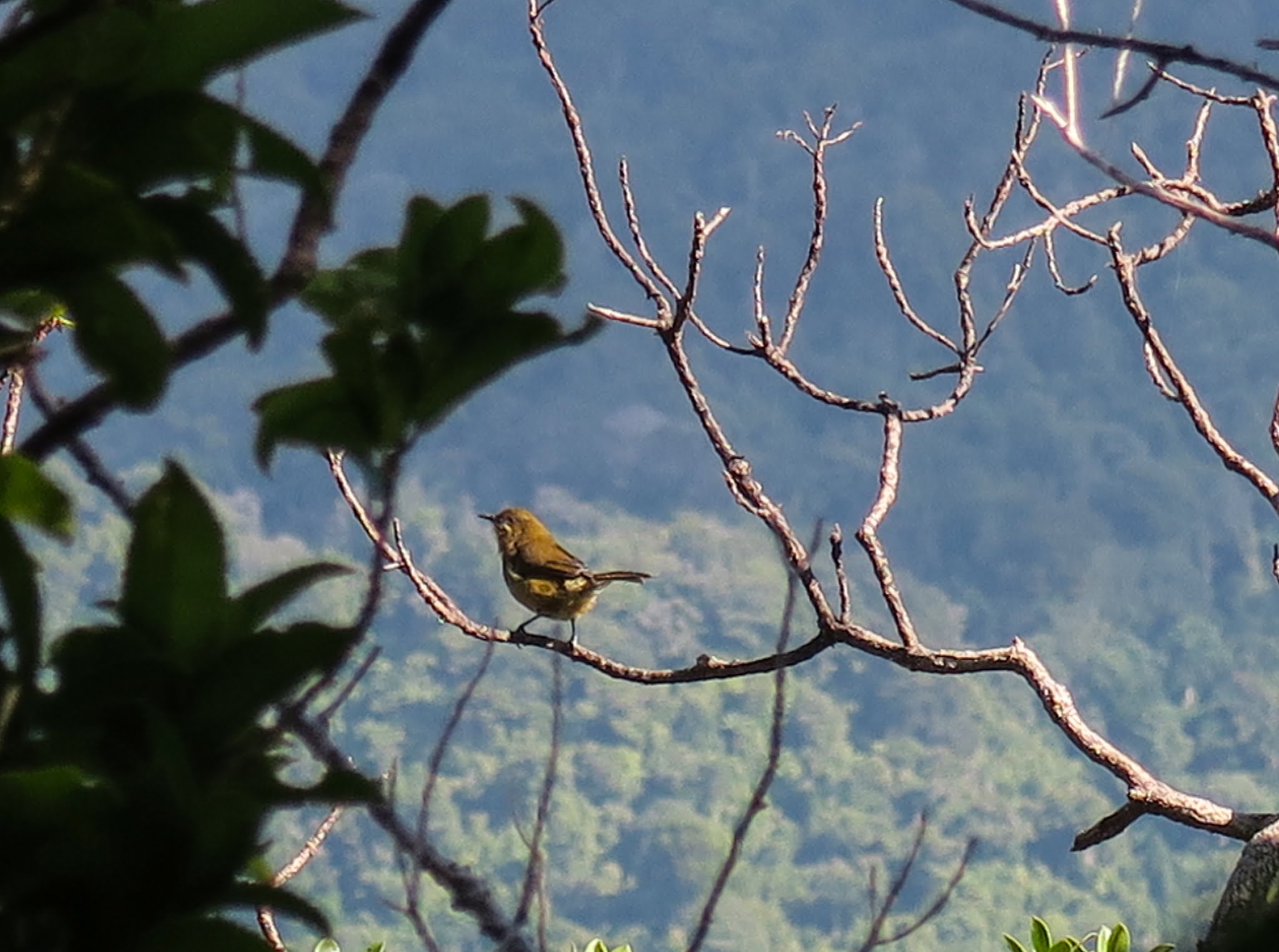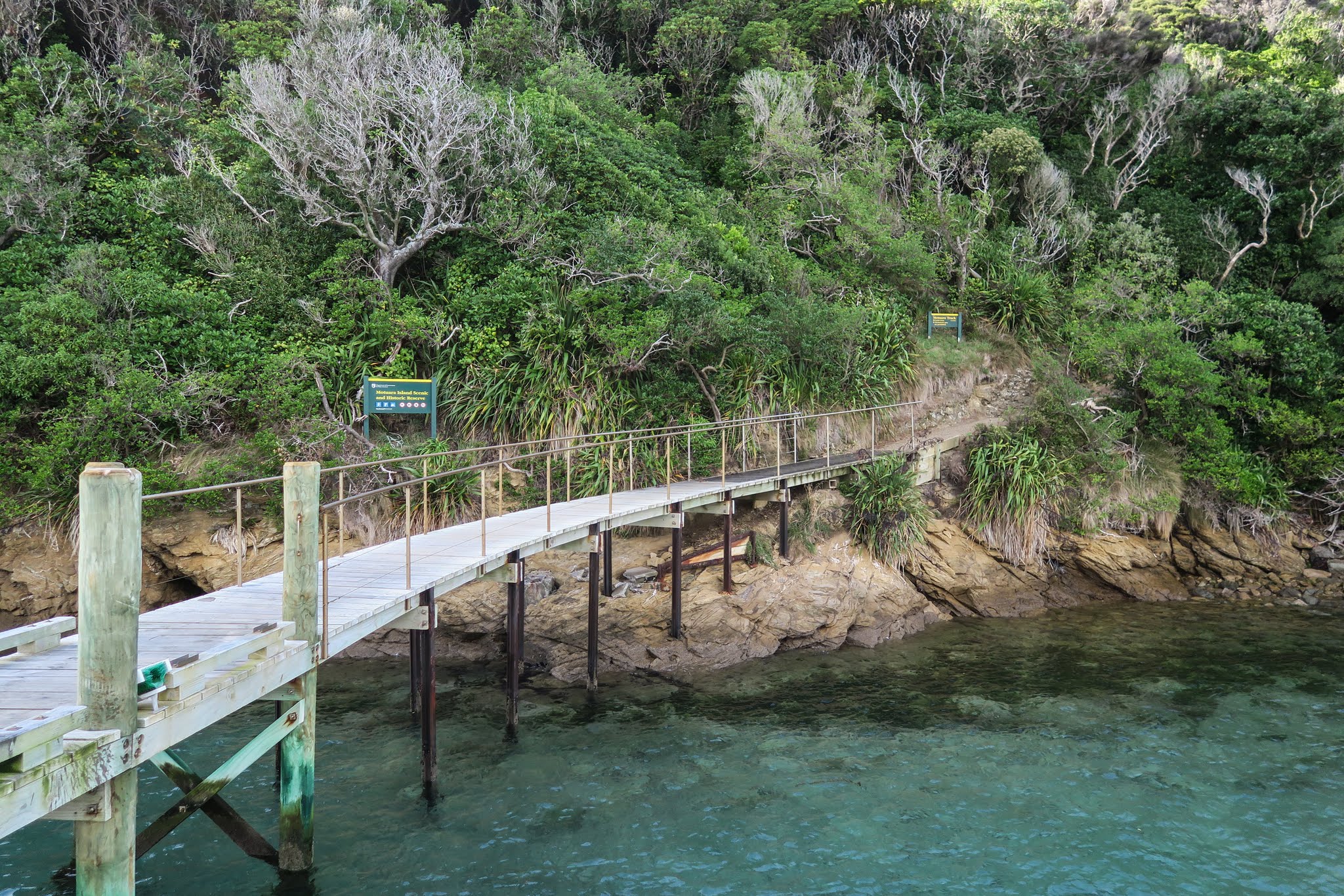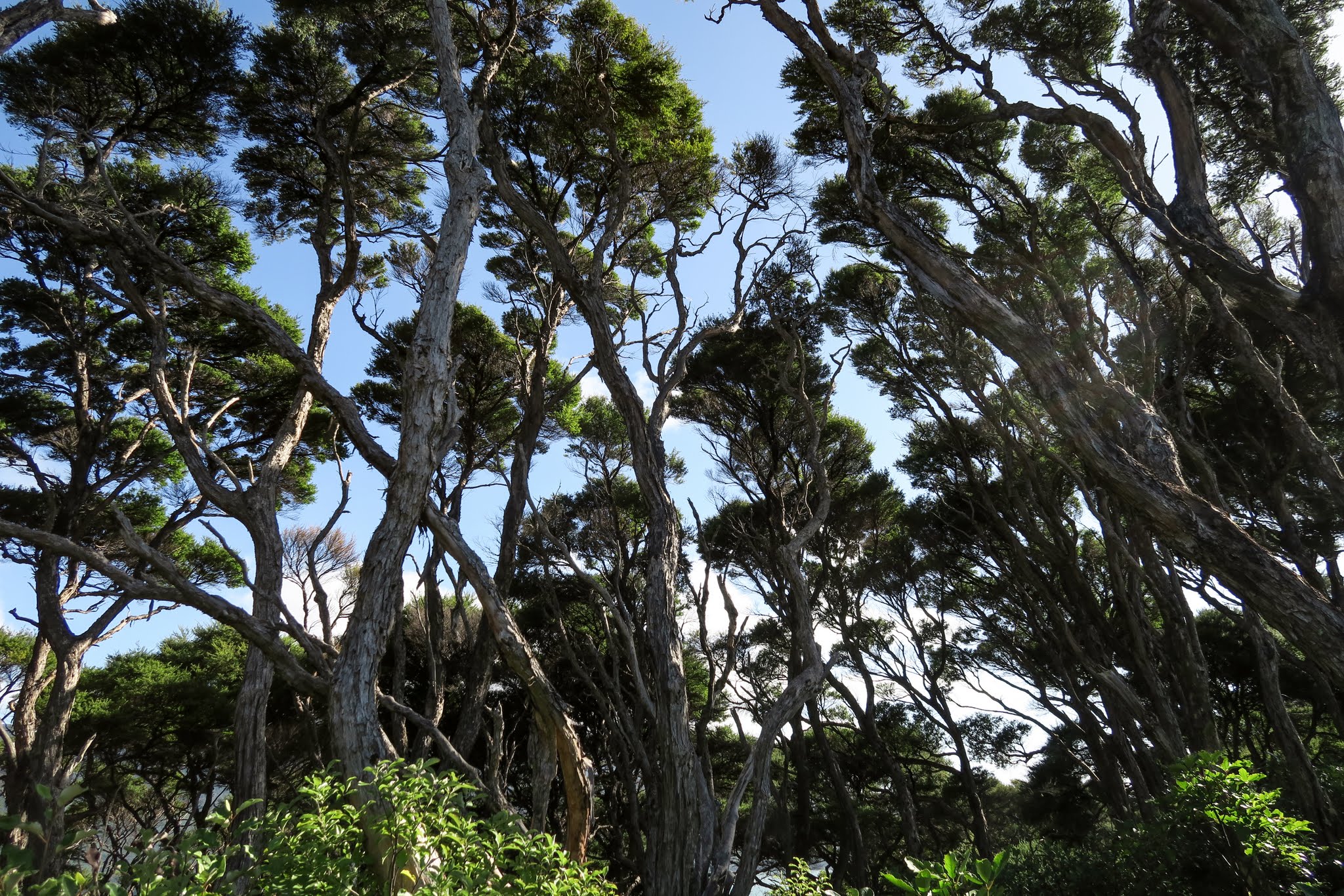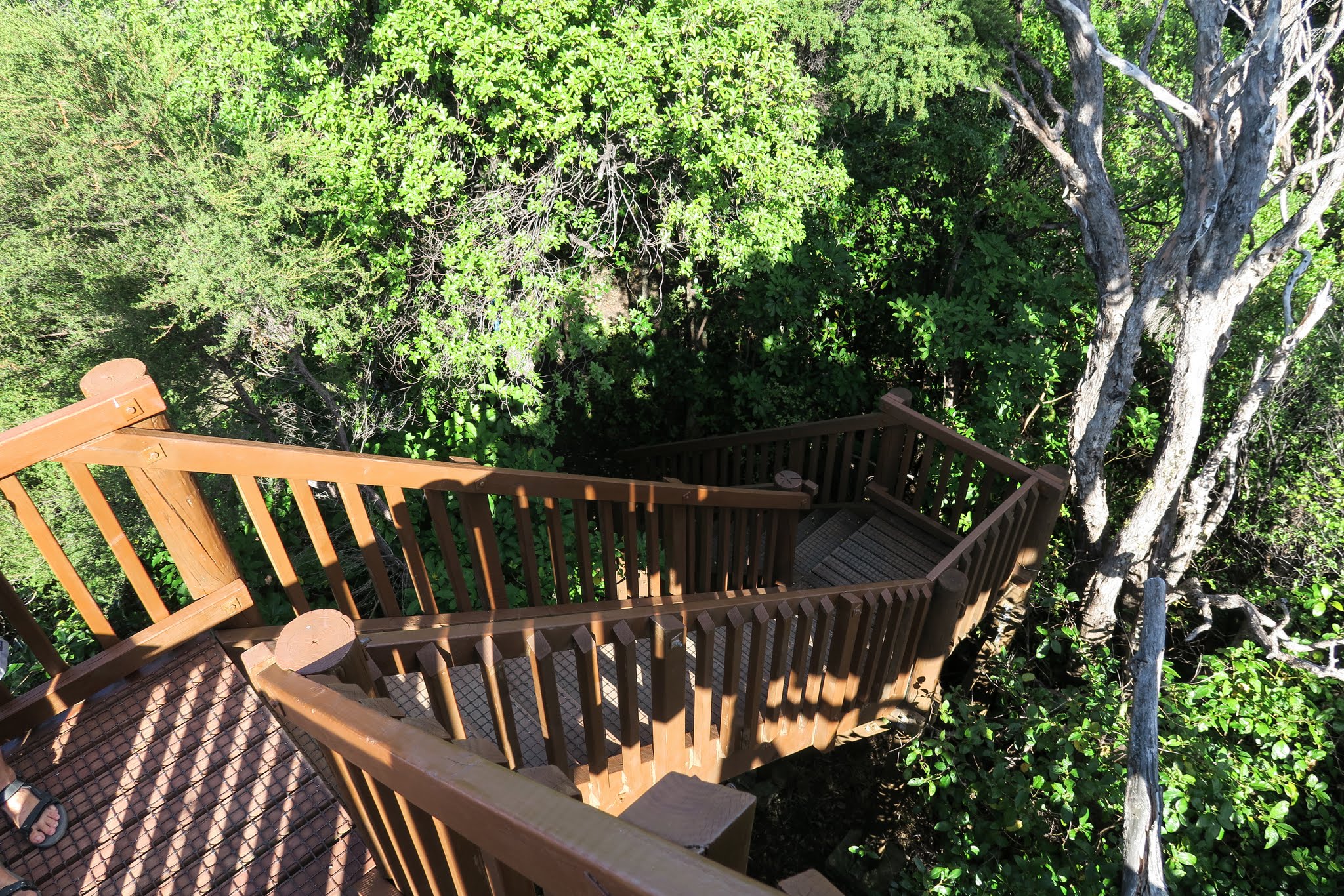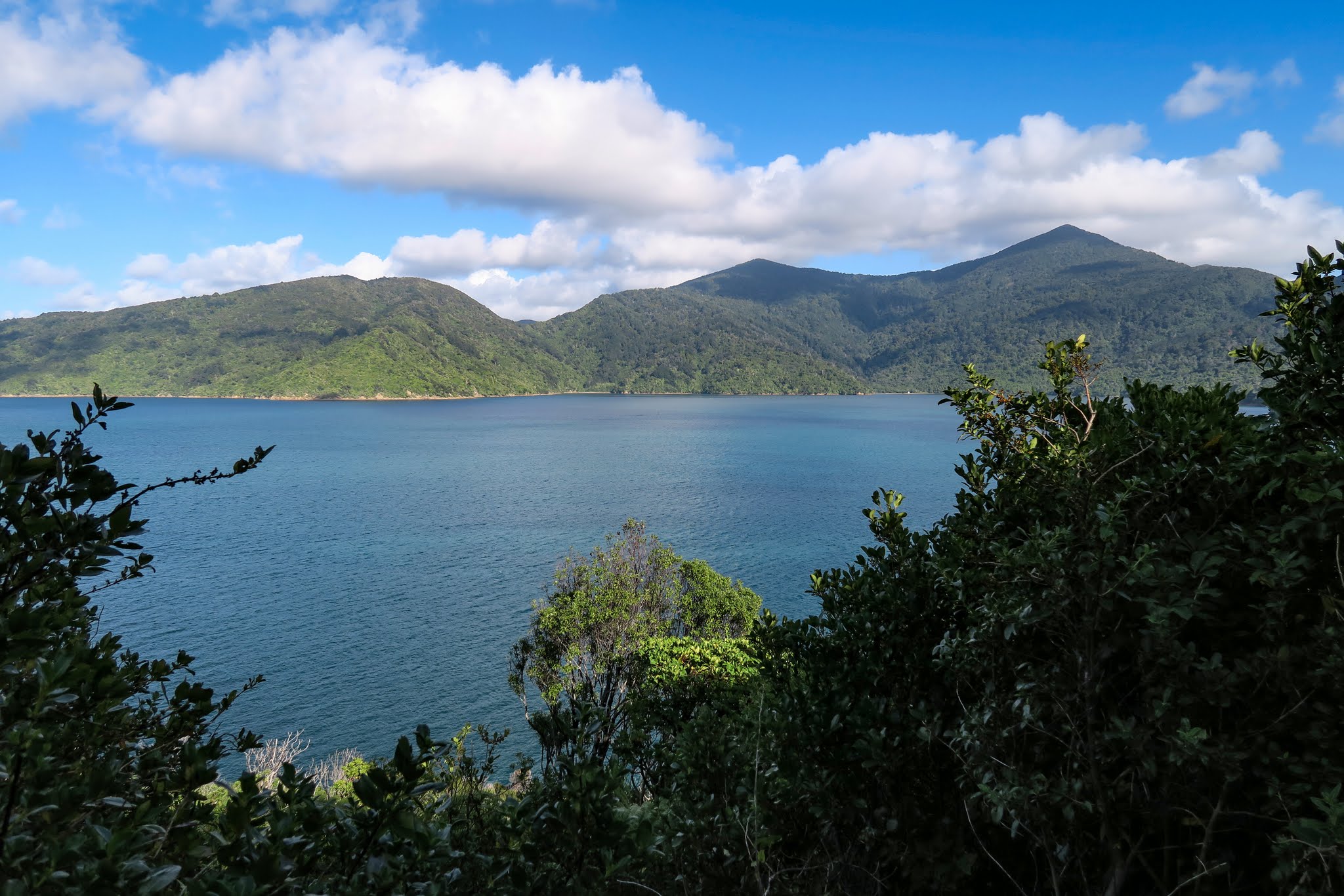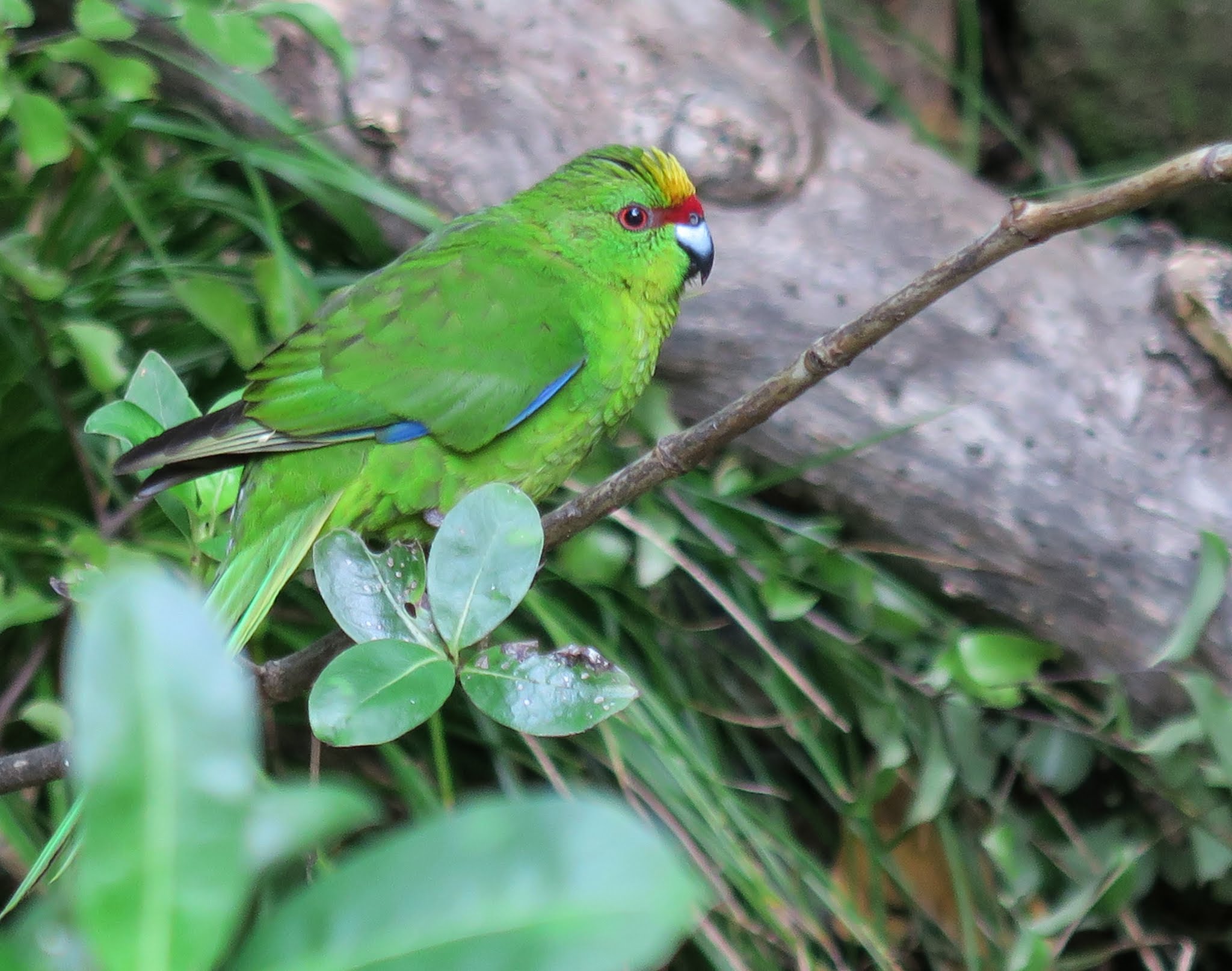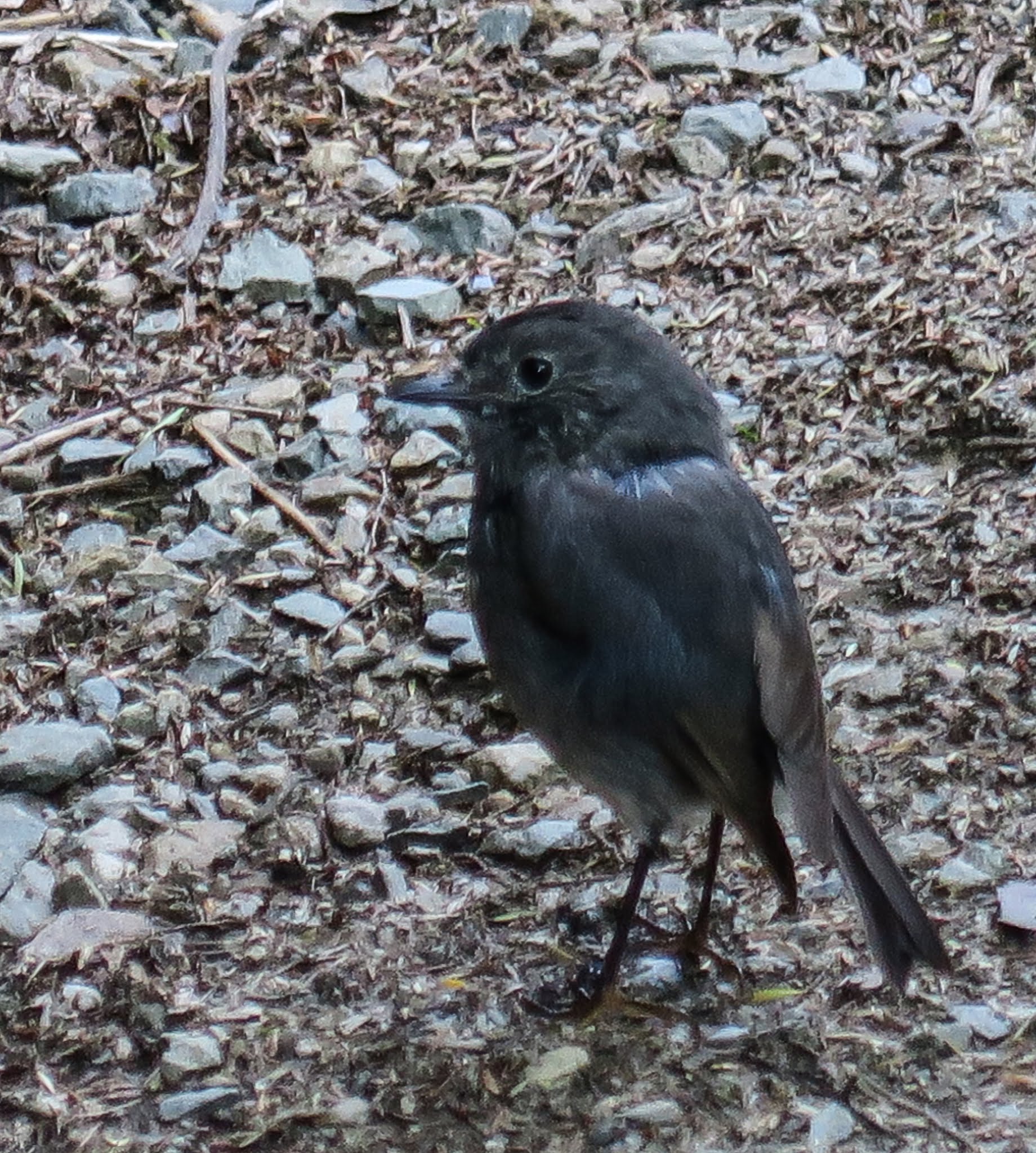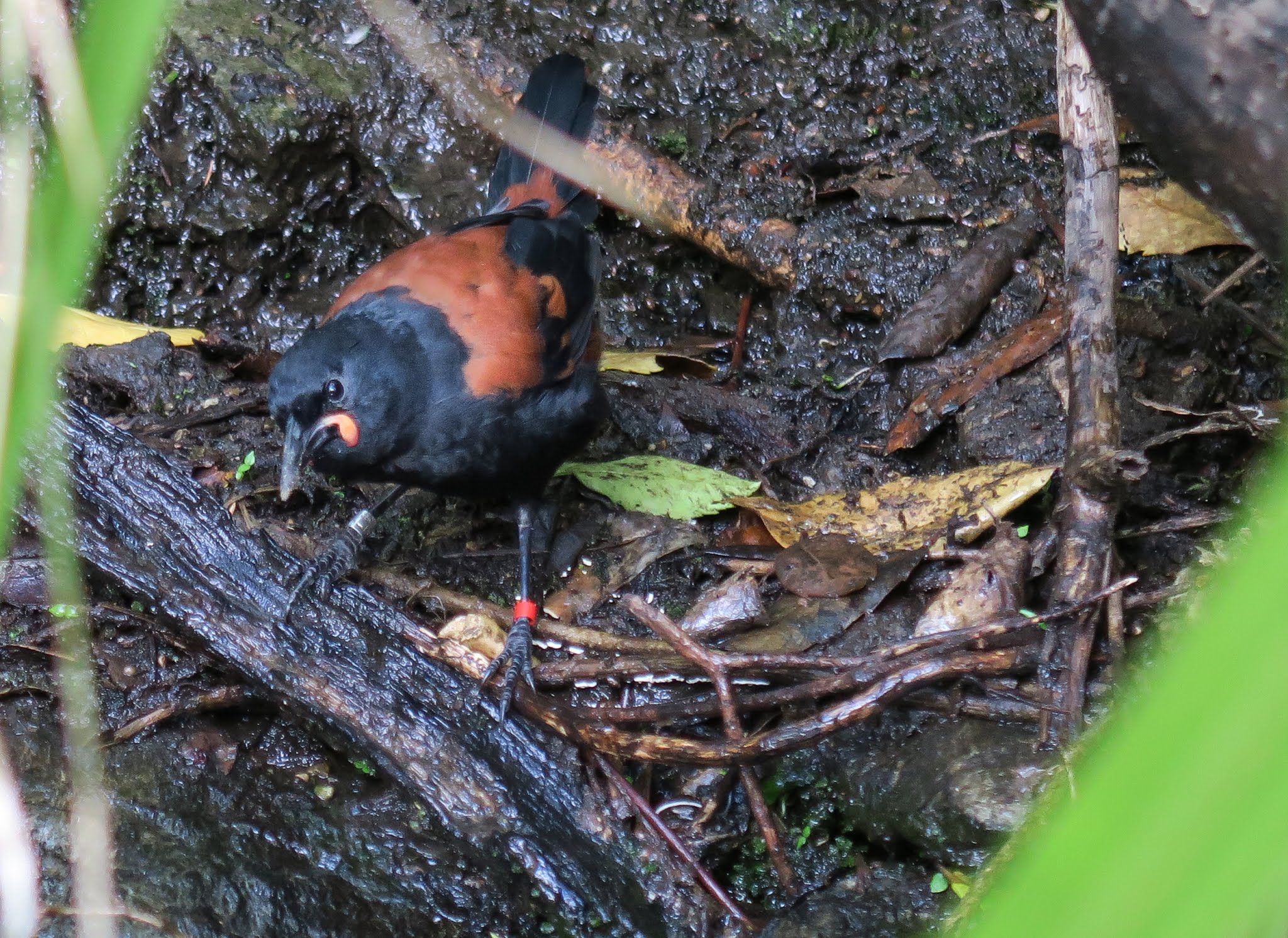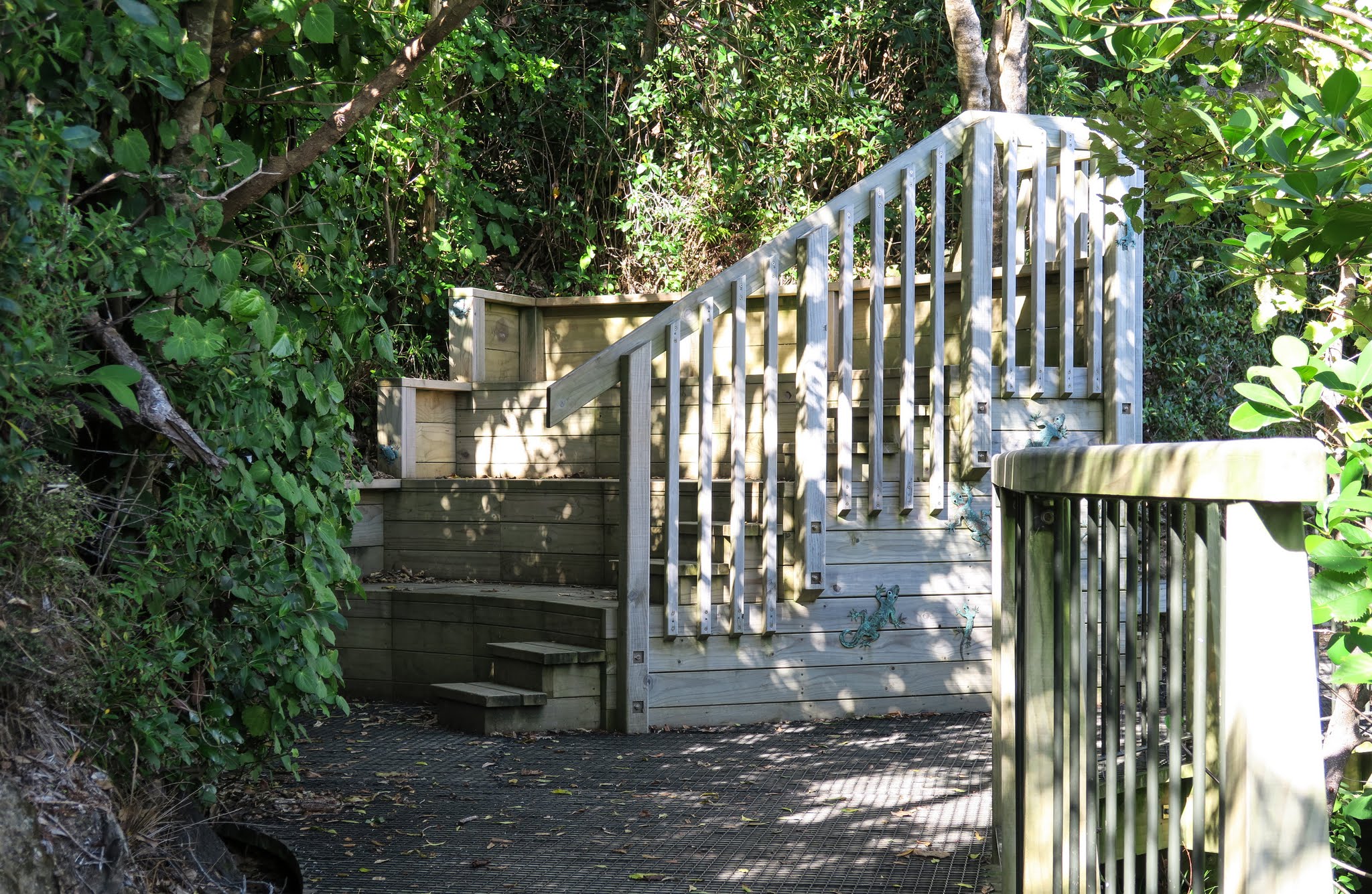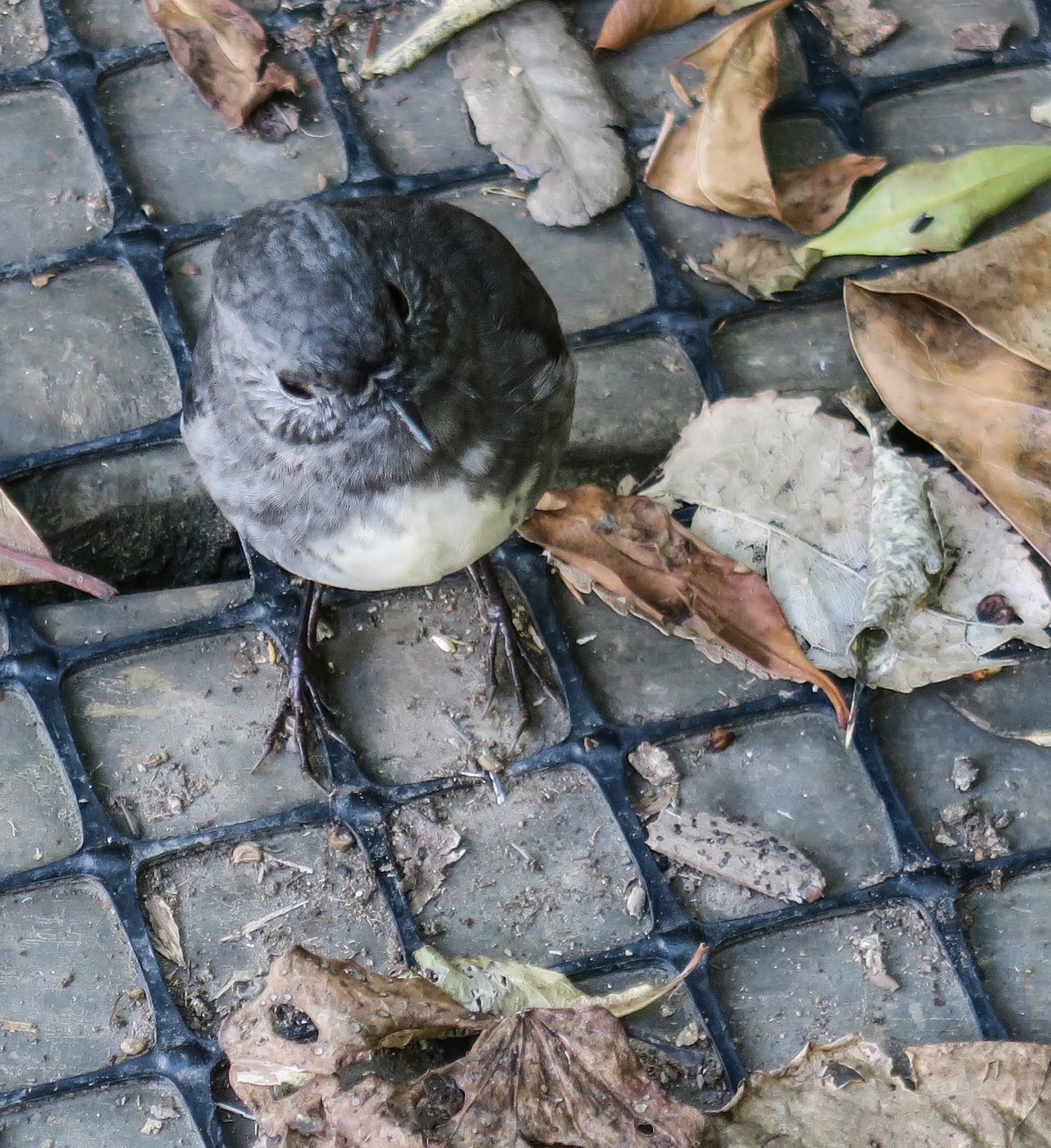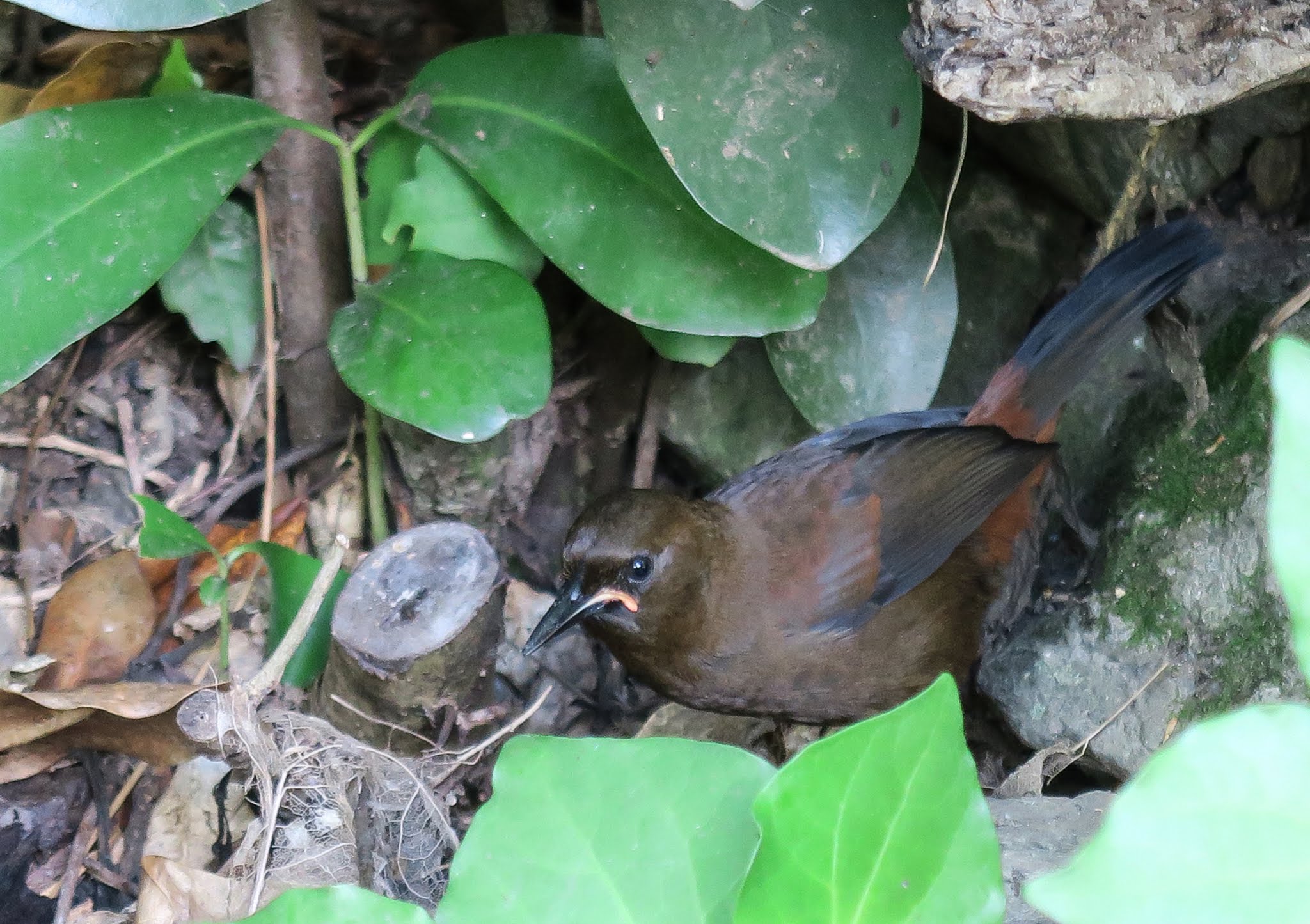April 5, 2016

Motuara Island is one of New Zealand’s “singing islands,” places that have become refuges for native birds. They’re like a porthole back into time, what New Zealand’s forests were like before human-introduced predators (stoats, rats and Australian possums) decimated much of the native bird population. Thankfully many of these species have been saved and now thrive in protected wildlife areas like this one.
Motuara is not a very sheltered anchorage, but anchoring near the pier gave us protection from the light southerly winds. We noticed passengers from small tour boat disembark before we got ashore and hoped to stay behind the group. There’s only one path here, a 20-minute uphill walk ending at a lookout tower alongside a monument to Captain Cook.
Once ashore, the first thing we noticed was the birdsong, so distinct in area like this. Soon, a friendly, curious New Zealand robin started trailing us, and we were seeing more and more birds in the trees around us. As we climbed higher we admired some impressive views of neighboring islands and the outer sound. We were also visited by more robins, who seemed totally unafraid of people.
We caught up to the small beehive of a tour group, some gathered around Captain Cook’s monument while others were squeezed onto the platform of the lookout tower. We didn’t let that deter us and squeezed in there with them, eavesdropping as their guide told stories about Captain Cook’s visits to this area. We didn’t stay long, though, and were able to get ahead of the group. (Below a gallery of photos from the Motuara trail. Click to enlarge and scroll.)
This didn’t last long. I was stopping so often to take photos of birds and scenery that the tour people caught up to us, bypassing us in groups of twos and threes. What struck us was that every single one of these people was so deep in conversation that no one was so much as glancing at the views, much less noticing any of the birds. We stood aside and let them all pass, relived when this group of chatterboxes all got back onto their boat and headed off. Now that the noisy group was gone, more and more birds started to appear.
Come to find out, we were near a small pond that serves as a communal bird bath, and if you’re quiet and patient, they’ll come bathe right in front of you. The park has even built a small, multi-level seating area by the pond so you can sit and watch.
And so we watched, and soon we were treated to bathing saddlebacks, robins, and yellow-crowned kakariki, all rare and endangered. Rich was sitting, but I stayed standing so I could film them. Rich kept telling me to be careful not to step on the robin who continually stood at my feet watching me, probably wondering why I was so interested in those other goofball birds when I had a much more interesting bird right at my feet.
Below, a gallery and a video clip of the bathing bird follies. The saddlebacks are the birds with the wattles on their cheeks, and the kakariki are the little green parrots. The New Zealand robin is the blackish bird, looking up at me and wanting reassurance that, in spite of photographing the other birds, I loved him best.
After awhile, it was time to head back to Legacy and start our journey to the Pelorus Sound, but this had been well worth taking the time to do. In fact I would say it’s a must-do for bird lovers; just don’t bring your talkative friends.–Cyndi

